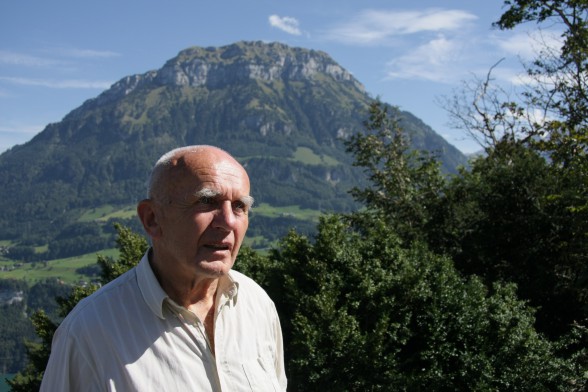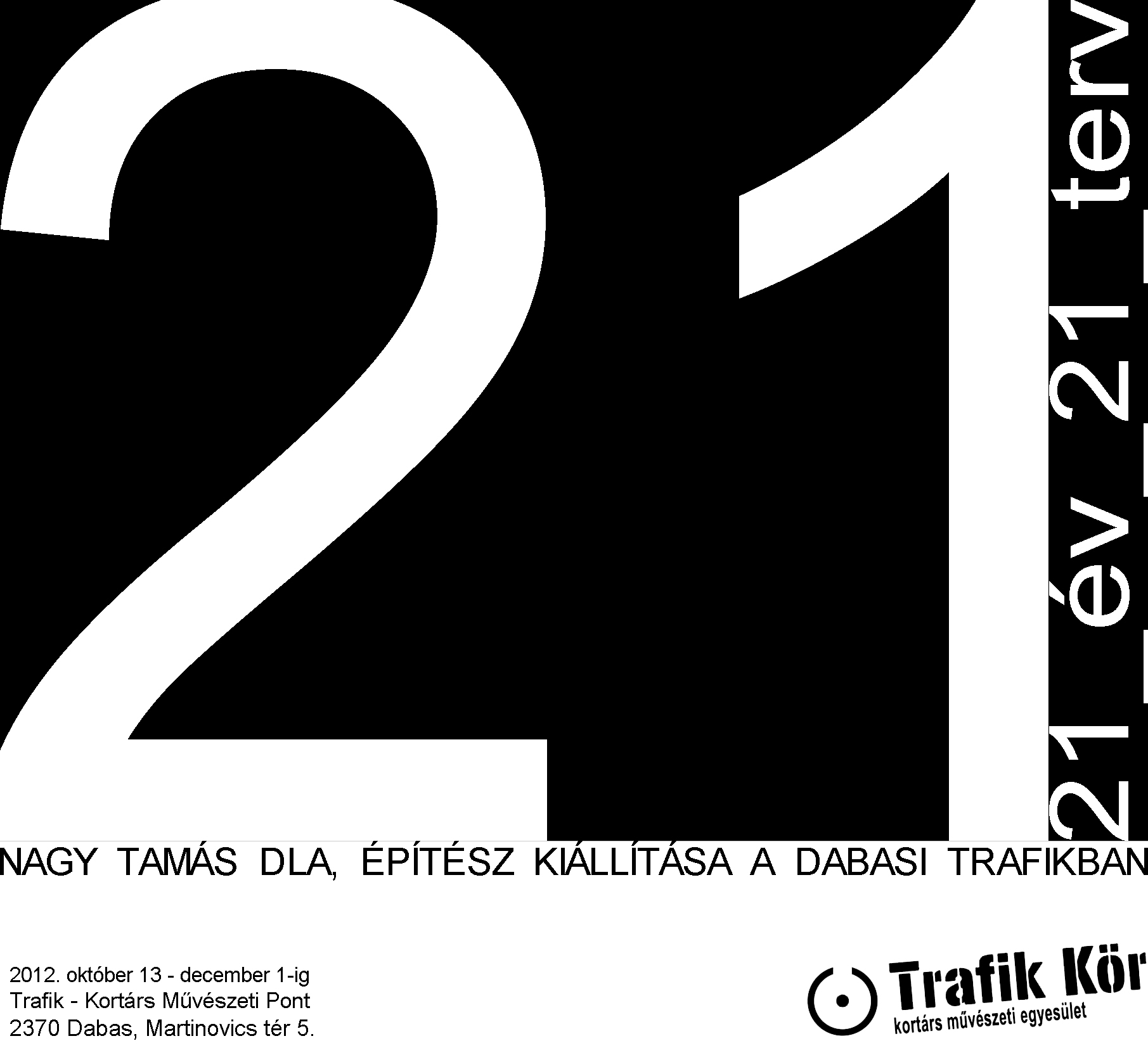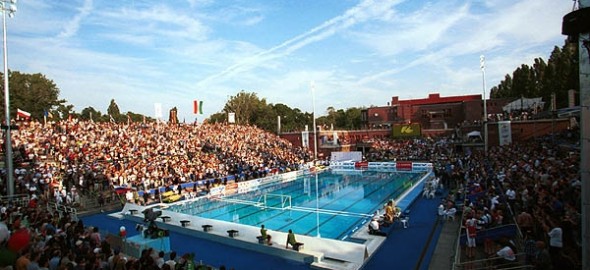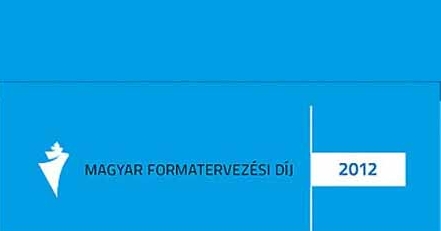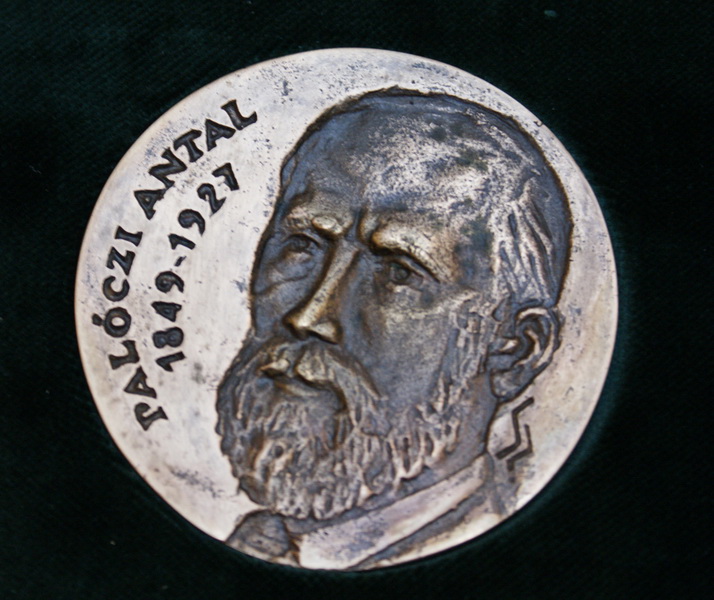Az N&n gal├®ria 2004-ben alap├Łtott Moln├Īr Farkas-d├Łj├Īt ebben az ├®vben a 80. sz├╝let├®snapj├Īt ├╝nnepl┼æ Zalotay Elem├®r kapta. A d├Łj├Ītad├Īsra 2012. okt├│ber 18-├Īn a mester eg├®szs├®gi ├Īllapot├Īra val├│ tekintettel sz┼▒k k├Črben ker├╝lt sor. A d├Łj├Ītad├Īs ut├Īn a FUGA r├Īdi├│ k├®sz├Łtett interj├║t Zalotayval.
21_├®v_21_terv
21_├®v_21_terv c├Łmmel ny├Łlik ki├Īll├Łt├Īs okt├│ber 13-├Īn a dabasi Trafikban. Nagy Tam├Īs DLA, Ybl-d├Łjas ├®p├Łt├®sz, a Moholy-Nagy M┼▒v├®szeti Egyetem ├ēp├Łt├®sz Tansz├®k├®nek vezet┼æje, aki a kort├Īrs magyar ├®p├Łt├®szet meghat├Īroz├│ alakja, most 21 ├®v 21 terv├®t ├®s megval├│sult alkot├Īs├Īt t├Īrja az ├®rdekl┼æd├Čk szeme el├®.
2013-ban meg├║julnak a legnagyobb budapesti uszod├Īk
A Nemzeti Sportk├Čzpontok folytatja a margitszigeti Haj├│s-Sz├®chy Sportuszoda ├®s a Cs├Īsz├Īr-Komj├Īdi Sportuszoda fel├║j├Łt├Īs├Īt. A tov├Ībbi fejleszt├®sekre els┼æsorban a 2014-es budapesti v├Łzilabda Eur├│pa-bajnoks├Īg miatt van sz├╝ks├®g, de az ├Ītalak├Łt├Īsoknak k├Čsz├Čnhet┼æen…
Az Odoo h├Īz sikere Madridban
A szeptember 29-├®n z├Īrult Solar Decathlon Europe versenyen ├Čsszes├Łtett rangsorban a hatodik helyen v├®gzett a budapesti m┼▒egyetemist├Īk ├Īltal tervezett ODOO-h├Īz. A t├Łzpr├│ba sor├Īn t├Łz k├╝l├Čnb├Čz┼æ szempont alapj├Īn ├®rt├®kelt├®k a szol├Īrh├Īzakat, ├Łgy a verseny ideje alatt minden nap m├Īs ├®s m├Īs zs┼▒ri kereste fel a csapatokat ├®s v├®geztek ellen┼ærz┼æ m├®r├®seket.
├ütadt├Īk a Magyar Formatervez├®si ├®s Design Management D├Łjakat
Finnorsz├Īg, Hollandia, Nagy-Britannia, Magyarorsz├Īg. Az els┼æ h├Īrom orsz├Īg m├Īr elismert a design-gondolkod├Īs ter├®n, ut├│bbi is ebbe a sorba szeretne be├Īllni. Az ├Üj Sz├®chenyi Terv megfogalmazza, hogy haz├Īnkat a t├®rs├®g kreat├Łv k├Čzpontj├Īv├Ī kell tenni. Ehhez minden alapunk megvan: j├│ szakemberek, kreat├Łv gondolkod├Īs ├®s motiv├Īl├│ sikert├Črt├®netek.
Makovecz Imre – Az ├®p├Łt├®sz ├®s m┼▒v├®sz ├®let├║tja ├®s hagyat├®ka
A Szlov├Īkiai ├ēp├Łt├®sz Sz├Čvets├®g megh├Łvja ├Čnt a “Makovecz Imre – Az ├®p├Łt├®sz ├®s m┼▒v├®sz ├®let├║tja ├®s hagyat├®ka” c├Łm┼▒ rendezv├®nyre ├®s a “D├®l-Szlov├Īkia v├Īrosainak mai v├Īrosk├®pi probl├®m├Īi ├ēszak-Kom├Īrom ├®s ├ērsek├║jv├Īr p├®ld├Īj├Īn” c├Łm┼▒ kerekasztal besz├®lget├®sre.
Az ├®v ├®p├Łt├®szeti fot├│ja 2012 – ├Ītad├Īsi ├╝nneps├®g ├®s ki├Īll├Łt├Īs megnyit├│
A M├ēSZ, a M├ēK ├®s az ├ēp├Łt├®szeti Fotogr├Īfusok Ny├Łlt T├Īrsas├Īga els┼æ alkalommal hirdette meg ŌĆ£Az ├®v ├®p├Łt├®szeti fot├│ja ŌĆ£ c├Łm┼▒ p├Īly├Īzat├Īt. A p├Īly├Īzat mindenkori c├®lja a magyarorsz├Īgi ├®p├Łtett ├®rt├®kek n├®pszer┼▒s├Łt├®se, a magyar ├®p├Łt├®szet magas sz├Łnvonalon val├│ bemutat├Īsa.
Magyar ├®p├Łt├®sziroda nemzetk├Čzi sikere
27 orsz├Īg 177 p├Īlyam┼▒ve k├Čz├╝l nyerte el a magyar A4 STUDIO ├®p├Łt├®szcsapata (Kendik G├®za, Papp Zolt├Īn, Maza Orsolya) egyed├╝li magyar d├Łjazottk├®nt, a ŌĆ×2012 TRIMO Architectural AwardsŌĆØ d├Łj├Īt a ŌĆ×Future Dreams AwardŌĆØ kateg├│ri├Īban.
Pro Architectura d├Łj 2012
A Pro Architectura-d├Łj egy ├®p├Łt├®szeti alkot├Īs kiemelked┼æ sz├Łnvonal├Īnak elismer├®sek├®nt adom├Īnyozhat├│ miniszteri kit├╝ntet├®s. Az ├®p├Łt├®szeti d├Łjak hierarchi├Īj├Īban az Ybl Mikl├│s-d├Łjat k├Čveti. M├Łg az Ybl-d├Łj ├®letm┼▒re vagy huzamosabb idej┼▒ ├®p├Łt├®szeti munk├Īss├Īgra adhat├│, a Pro Architectura-d├Łjat m├Īr n├®h├Īny ├®ves gyakorlattal rendelkez┼æ ├®p├Łt├®sz is megkaphatja.
Lechner Lajos-d├Łj 2012
A Lechner Lajos-d├Łj az ├®p├Łt├®s├╝gyi ├®s az ├®py├Łt├®sfel├╝gyeleti hat├│s├Īgi feladatk├Črben legal├Ībb tizen├Čt ├®ven ├Īt v├®gzett kimagasl├│ szakmai tev├®kenys├®g elismer├®s├®t kifejez┼æ miniszteri d├Łj. A d├Łjakat az ├ēp├Łt├®szet vil├Īgnapj├Īn, 2012. okt├│ber 1-j├®n adt├Īk ├Īt a Bem├╝gyminiszt├®rium M├Īrv├Īnyterm├®ben.
Pal├│czi Antal-d├Łj 2012
Pal├│czi Antal-d├Łj a telep├╝l├®srendez├®s, illetve a ter├╝letrendez├®s ter├╝let├®n legal├Ībb egy ├®vtizeden ├Īt v├®gzett kiemelked┼æ tev├®kenys├®g, ├®s az el├®rt szakmai sikerek elismer├®s├®t kifejez┼æ miniszteri d├Łj. A d├Łjakat az ├ēp├Łt├®szet Vil├Īgnapj├Īn, 2012. okt├│ber 1-j├®n adt├Īk ├Īt a Bem├╝gyminiszt├®rium M├Īrv├Īnyterm├®ben.
Szendr┼æi D├Łj ├Ītad├│ ├®s az ├ēME Mesteriskola XXII. ciklus├Īnak megnyit├│ja
Eml├®kezve a Mesteriskola alap├Łt├│j├Īra, – figyelemmel az adom├Īnyoz├Īs felt├®teleire – a Magyar ├ēp├Łt┼æm┼▒v├®szek Sz├Čvets├®ge ├®s az ├ēME Mesteriskola ├Čt├Čdik alkalommal adom├Īnyozott Szendr┼æi D├Łjat egykori mesteriskol├Īs hallgat├│inak
